Inari sushi (inarizushi) is sweet, savory, and so satisfying. Seasoned tofu pouches are filled with sushi rice and can be customized with your favorite toppings.

Inari sushi is a type of sushi made by wrapping sushi rice in inari age (seasoned deep-fried tofu pouch). The sweet-savory flavor of the inari age pairs so nicely with the sweet and tangy sushi rice… It’s such a comforting combo!
It’s also a great option for vegan or vegetarian friends. This is one of my husband’s favorite types of sushi, so I really hope you enjoy it too.
You can use store-bought inari age, or make your own with my maple inari age recipe. Try packing inari sushi in a bento with tamagoyaki (Japanese rolled omelet) and a few veggie sides for a perfect picnic meal!
Why You'll Love This Recipe
- No Refined Sugar: This recipe uses maple syrup in the sushi rice, so if you pair it with my maple inari age, you can enjoy inari sushi without any refined sugar!
- Easy to Customize: You can switch up the fillings depending on what you have or what’s in season. Try adding yuzu, shiso, or gari (pickled sushi ginger)... whatever you like!
- (Probably) the Easiest Sushi to Make: Sushi might sound intimidating, but inari sushi is super beginner-friendly. No tricky techniques, just be gentle and patient when handling the inari age.
Notes on Ingredients
See the recipe card for the full ingredients list.
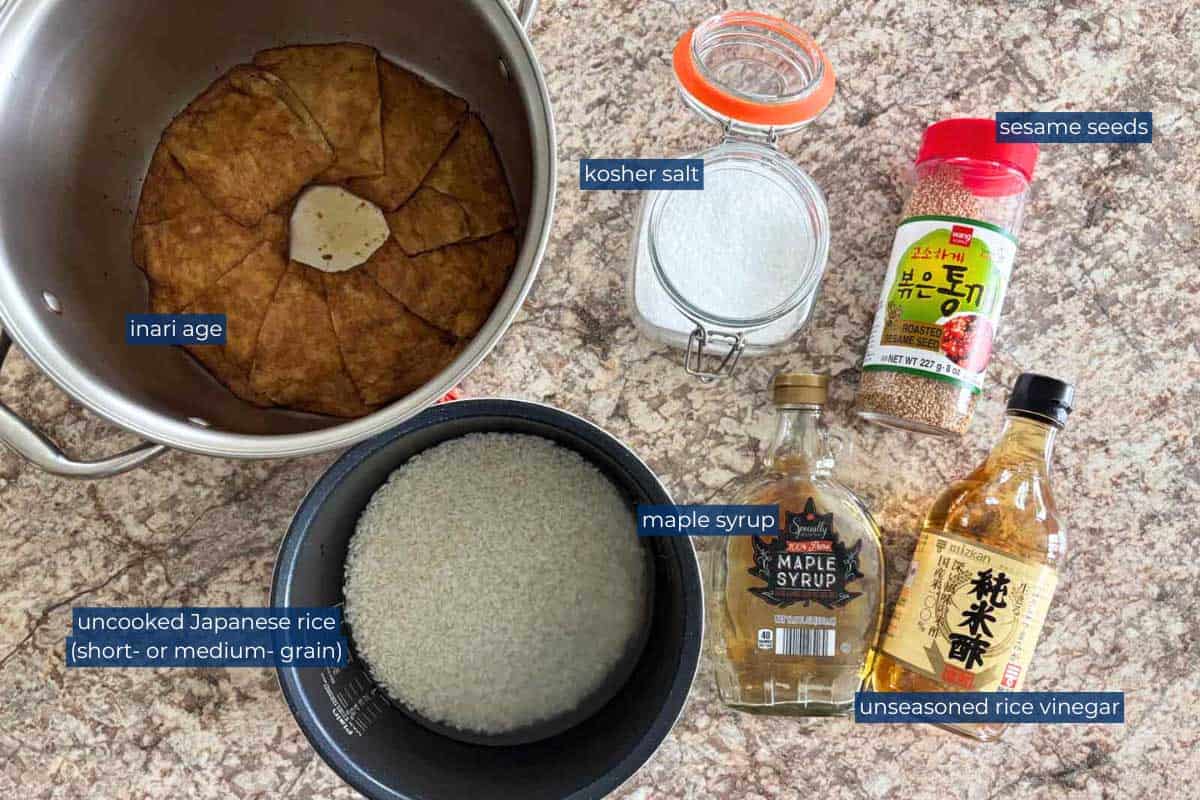
- Inari age: Inari age is aburaage (deep-fried tofu pouches) simmered in a sweet and savory broth. You can use store-bought or homemade, but I really recommend trying my inari age made with maple syrup because store-bought versions are often too salty or overly sweet.
- Rice: Use medium- or short-grain white rice for the best texture. Avoid other types of rice, such as glutinous rice or basmati, because they have very different textures and aren’t suited for sushi.
- Rice vinegar: Be sure to use plain, unsweetened rice vinegar. Skip seasoned vinegar or sushi vinegar blends, as they already have added sugar and salt.
Substitutions and Variations
- Kansai vs. Kanto Style: Kansai-style inari sushi is typically shaped like a triangle, while Kanto-style, which is what this recipe makes, is shaped more like a small bale. Kansai-style often mixes fillings into the rice and seasons the inari age with usukuchi (light-colored) soy sauce. Kanto-style usually uses plain sushi rice and seasons the inari age with koikuchi (regular) soy sauce.
- Rice Mix-In Options: You can add ingredients to the rice for extra flavor. Some tasty mix-ins include: ume (pickled plum), shiso leaves, gari (pickled ginger), fresh ginger, yuzu peel
- Topping Ideas: If you're making inari sushi for a hare (festive or special) occasion, try serving an open version instead of closing the pouch and flipping it upside down. Just fill the inari age with rice and add toppings like: scrambled egg, soboro (seasoned ground meat or tofu), boiled shrimp, sashimi or ikura (salmon roe), vegetables like cucumber, snap peas, or renkon (lotus root)
How to Make Inari Sushi
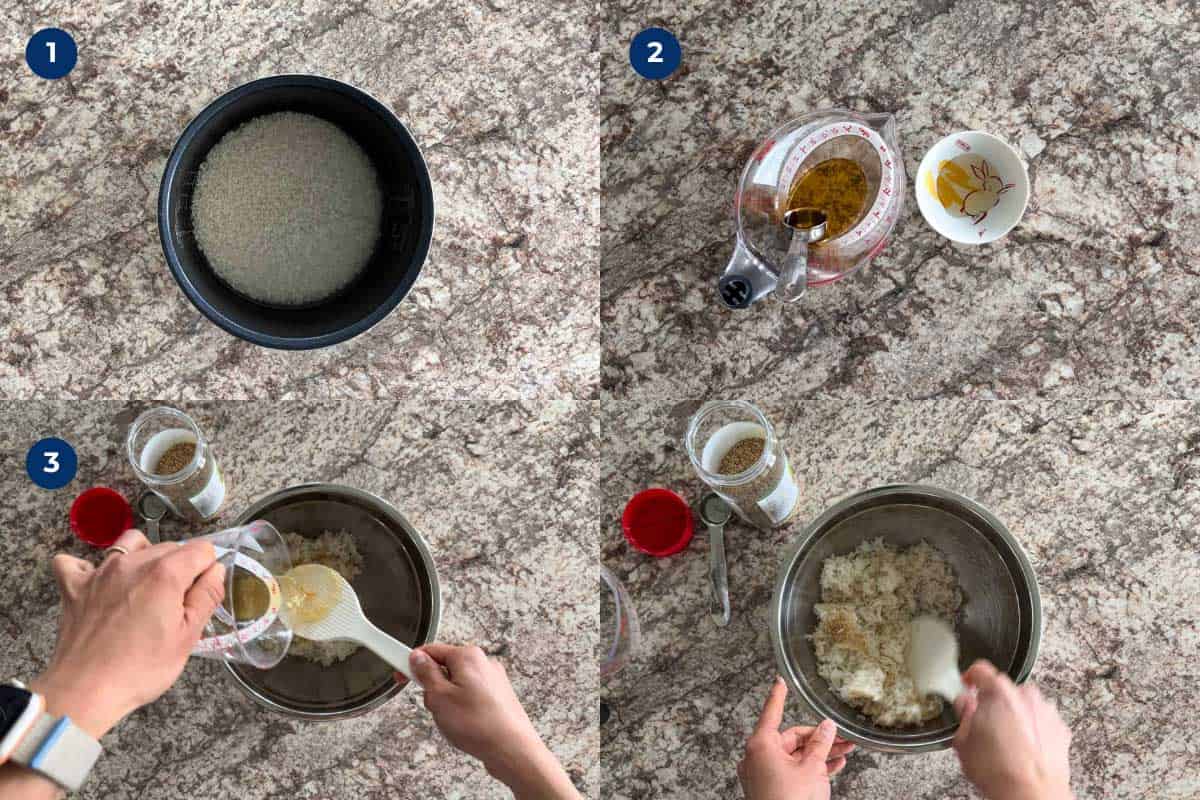
- Make the inari age first, or buy it from an Asian grocery store.
- Rinse, soak, and cook the rice.
- Mix all the sushi vinegar ingredients in a bowl until the salt dissolves.
- While the rice is still hot, gently mix in the sushi vinegar.
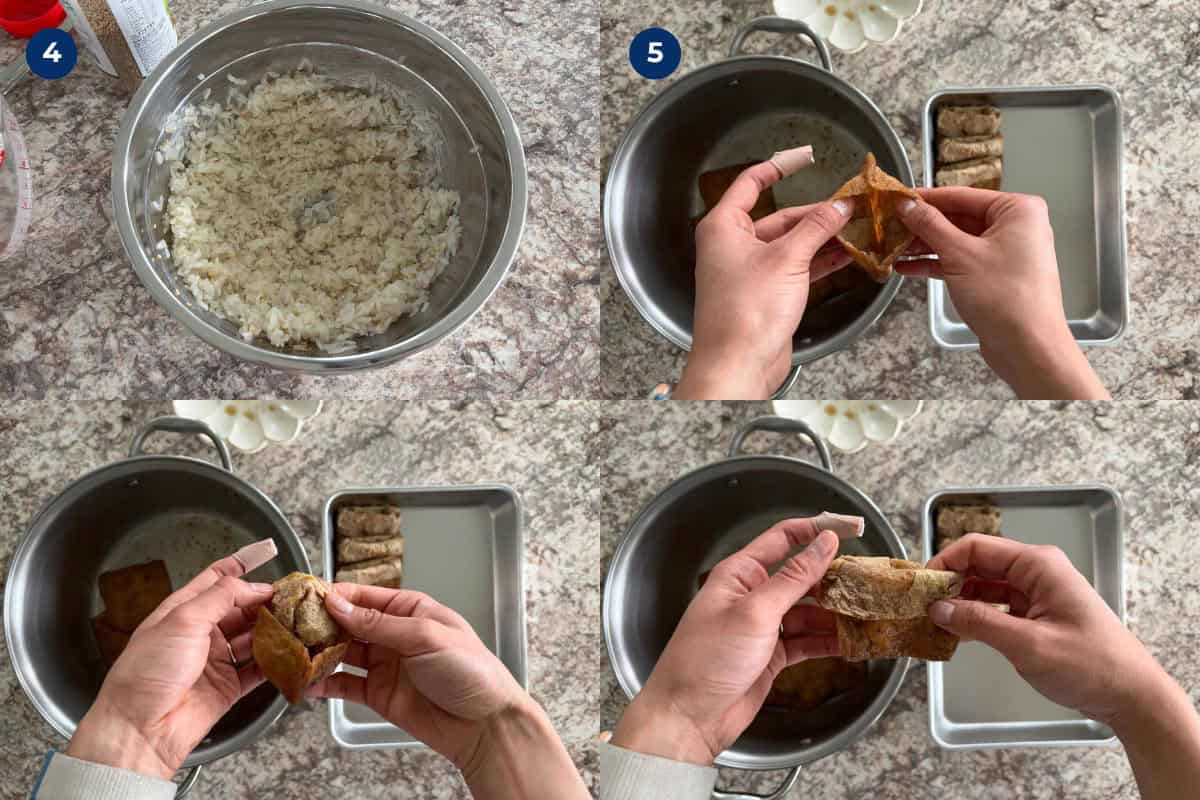
- Spread the rice along the sides of the bowl, cover it with a damp towel, and let it cool to room temperature.
- Open each inari age and fold the tip outward.
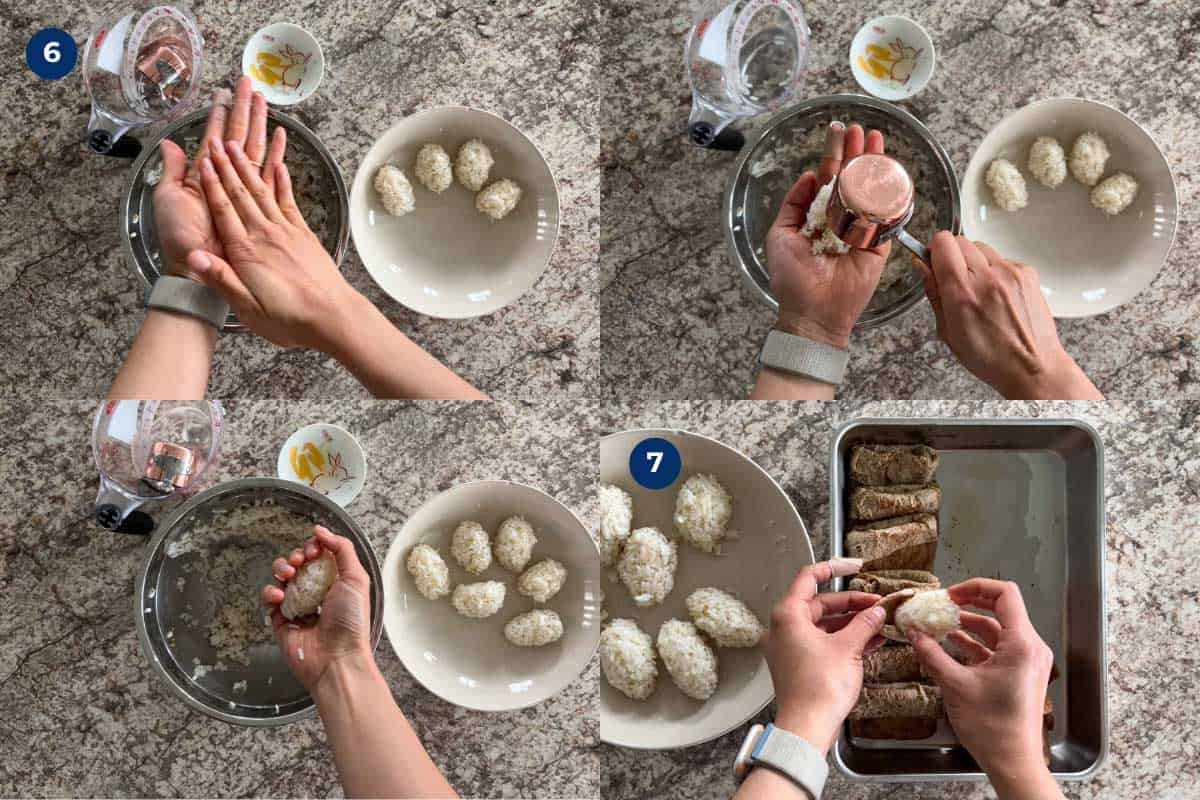

- Wet your hands with the sushi vinegar and shape the rice into small bale-like pieces.
- Fill each inari age with rice, hold the open end closed, then flip it over so the seam side is on the bottom.
Kurumi's Tips
- Mix the Rice by “Cutting” It: When mixing sushi vinegar into the rice, don’t stir it like cake batter. Instead, tilt your rice paddle about 45 degrees and use a slicing motion; cut through the rice from top to bottom. Then gently scoop from the bottom to mix evenly. Repeat this process to combine everything without crushing the rice.
- Cool the Rice Quickly: After spreading the rice along the sides of the bowl, use an uchiwa (hand fan) or something similar (like a thin plastic cutting board) to cool it down quickly. This prevents the rice from getting soggy and helps give it a nice, shiny finish.
- Handle Inari Age Gently: Inari age is very delicate, so be gentle when flipping the tip open and filling it with rice.
What to Serve with Inari Sushi
Inari sushi pairs well with just about any Japanese dish!
If you’re putting together an inari sushi bento, try adding tamagoyaki (Japanese rolled omelet), air fryer karaage, and a few veggie sides like sunomono, gomaae, or simmered kabocha. And of course, miso soup is always a perfect match!
Storage & Reheating Instructions
- How to store: Wrap each inari sushi in plastic wrap, then place them in an airtight container or bag. Store in the fridge for up to 1 day, or freeze for up to 1 month.
- How to reheat: Microwave the inari sushi for about 30 seconds, then continue in 10 to 15-second increments until thawed. Just warm them slightly and don’t overheat, so the sushi rice retains its nice tangy flavor.
FAQs
Inari sushi is a type of sushi made by wrapping sushi rice in inari age (seasoned deep-fried tofu pouches). The name comes from Inari Shrines in Japan, where inari age was traditionally offered. Over time, people started using it to make sushi.
It can be! If the inari age doesn’t contain fish-based dashi or is made with vegan-friendly dashi, then yes, inari sushi is vegan.
As for gluten-free: inari age is usually seasoned with soy sauce, which contains gluten. But if you use gluten-free soy sauce to make the inari age, then yes, you can make gluten-free inari sushi too.
Traditional inari sushi is filled with sushi rice, a mix of cooked rice and sushi vinegar (rice vinegar, sugar, and salt). But you can definitely get creative with it!
Popular add-ins include shiso leaves, ume (pickled plum), and simmered hijiki (seaweed). Feel free to experiment with your favorite flavors.
Not at all! Inari sushi is actually one of the easiest types of sushi to make. Just be gentle when handling the inari age as they’re a bit delicate and can tear easily.
Yes, inari sushi is great for lunchboxes or picnics as long as you can keep it cool.
For better food safety, try mixing in antibacterial ingredients like umeboshi (pickled plum) or sesame seeds, and avoid raw fish or meat-based fillings. Make sure the sushi is completely cool before packing, and use an ice pack to keep it fresh until lunchtime.
You can eat inari sushi with chopsticks or just pick it up with your hands. Take one big bite or a few smaller ones. Whatever works for you!
More Japanese Side Dish Recipes
Looking for other recipes like this? Try these:
💌 If you tried this recipe and liked it, I’d love to hear from you! Leave a comment and review below or send a photo of your dish to my email. I’d be so happy to see your creation!
📖Recipe
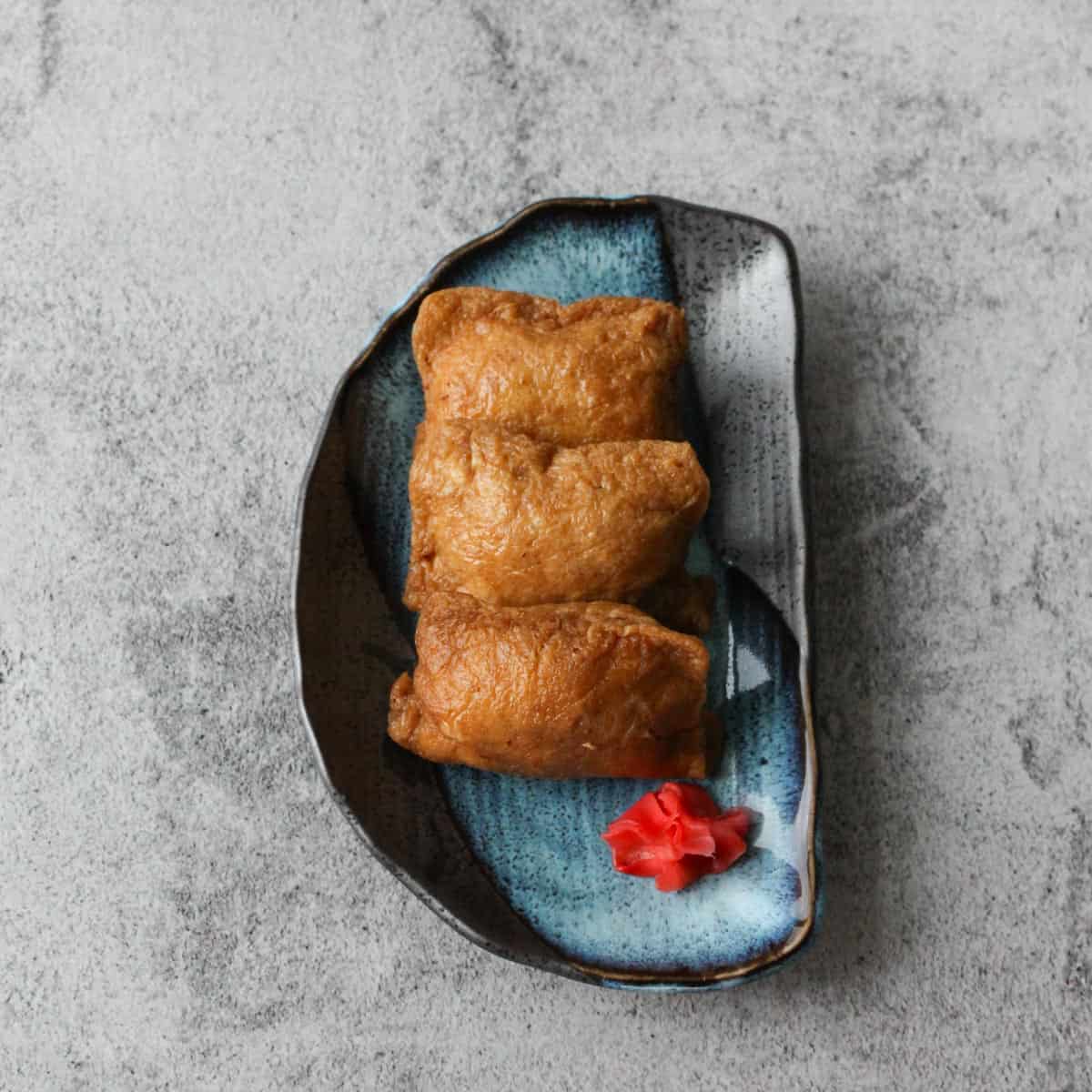
Easy Inari Sushi in Fried Tofu Pockets (Inarizushi)
Ingredients
Method
- Prep Inari Age: If you want to make homemade inari age, start by making them first.
- Rinse the rice: Place ¾ cup uncooked short- or medium-grain white rice in a bowl and rinse it about three times until the water is clear.
- Cook the rice:- Using a Rice Cooker or Slow Cooker: Transfer rinsed rice and add ¾ cup water to the cooker. Soak for at least 30 minutes, then start the cooker and let it finish as per settings.- Using a Pot on the Stovetop: Transfer rinsed rice and add ¾ cup water to the pot. Soak for at least 30 minutes. Cover and heat on medium until it boils, then reduce to low and simmer for 15 minutes. Turn off heat and let steam, covered, for 10 minutes. (Avoid lifting the lid while cooking.)
- Make the Sushi Vinegar: In a small bowl, mix 2 tablespoons unseasoned rice vinegar, 1 tablespoon maple syrup, and ½ teaspoon kosher salt until the salt dissolves. Scoop out ½ tablespoon and set it aside to wet your hands later when shaping the rice.
- Make the Sushi Rice: Once the rice is ready, transfer it to a large bowl. Add the sushi vinegar and ½ tablespoon roasted white sesame seeds. Using a rice paddle, tilt it at about a 45-degree angle and mix with a slicing motion, cutting through the rice from top to bottom. Gently scoop from the bottom to combine everything evenly without crushing the grains. Repeat until the rice is mixed well.
- Cool the Rice: Use an uchiwa (Japanese fan) or something thin and flexible like a plastic cutting board to fan the rice and cool it down until it stops steaming. Spread the rice thinly along the sides of the bowl, then cover it with a tightly wrung-out damp cloth. Let it sit until it’s cool to the touch (don’t wait until the rice is completely cool because it’ll be dry and hard to shape).
- Prep the Inari Age Pouches: If the inari age is too wet, gently pat it dry with a paper towel. Carefully open each pouch and fold the tip outward.
- Shape the Rice: Wet your hands with the sushi vinegar you set aside earlier. Scoop about a lightly packed ¼ cup of rice and shape it into a small bale (oval) shape. If you run out of sushi vinegar, you can just use water to wet your hands. Soaking the measuring cup in water helps prevent the rice from sticking, but make sure to pour out the water before scooping the rice.
- Fill the Inari Age: Gently stuff each pouch with rice and press lightly so the rice gets down to the bottom. You can add a little chopped pickled ginger on top if you’d like. Then fold the open end closed and place the pouch seam-side down.
Notes
- Inari age: Seasoned deep-fried tofu pouches. You can use store-bought, but I recommend my homemade maple inari age. It’s less salty and more balanced.
- Rice: Use medium- or short-grain Japanese rice. Avoid other types of rice because the texture doesn’t work for sushi.
- Rice vinegar: Use plain, unsweetened rice vinegar. Skip seasoned or sushi vinegar blends, which already contain sugar and salt.
- Rice Mix-Ins: Mix in extras for flavor: ume (pickled plum), shiso, gari, fresh ginger, or yuzu peel.
- Topping Ideas: For festive hare versions, leave the pouch open and top with scrambled egg, soboro, shrimp, sashimi, ikura, or colorful veggies like cucumber, snap peas, or lotus root.
- What to Serve with Inari Sushi: Great with any Japanese dish! For a bento, pair with tamagoyaki, karaage, and veggie sides like sunomono, gomaae, or simmered kabocha. Miso soup is always a win.
- Storage & Reheating Instructions: Wrap each piece and store in an airtight container. Keep in the fridge for 1 day or freeze for up to 1 month. Reheat in the microwave, about 30 seconds per piece, just until warm.
📌Pin This Recipe For Later!
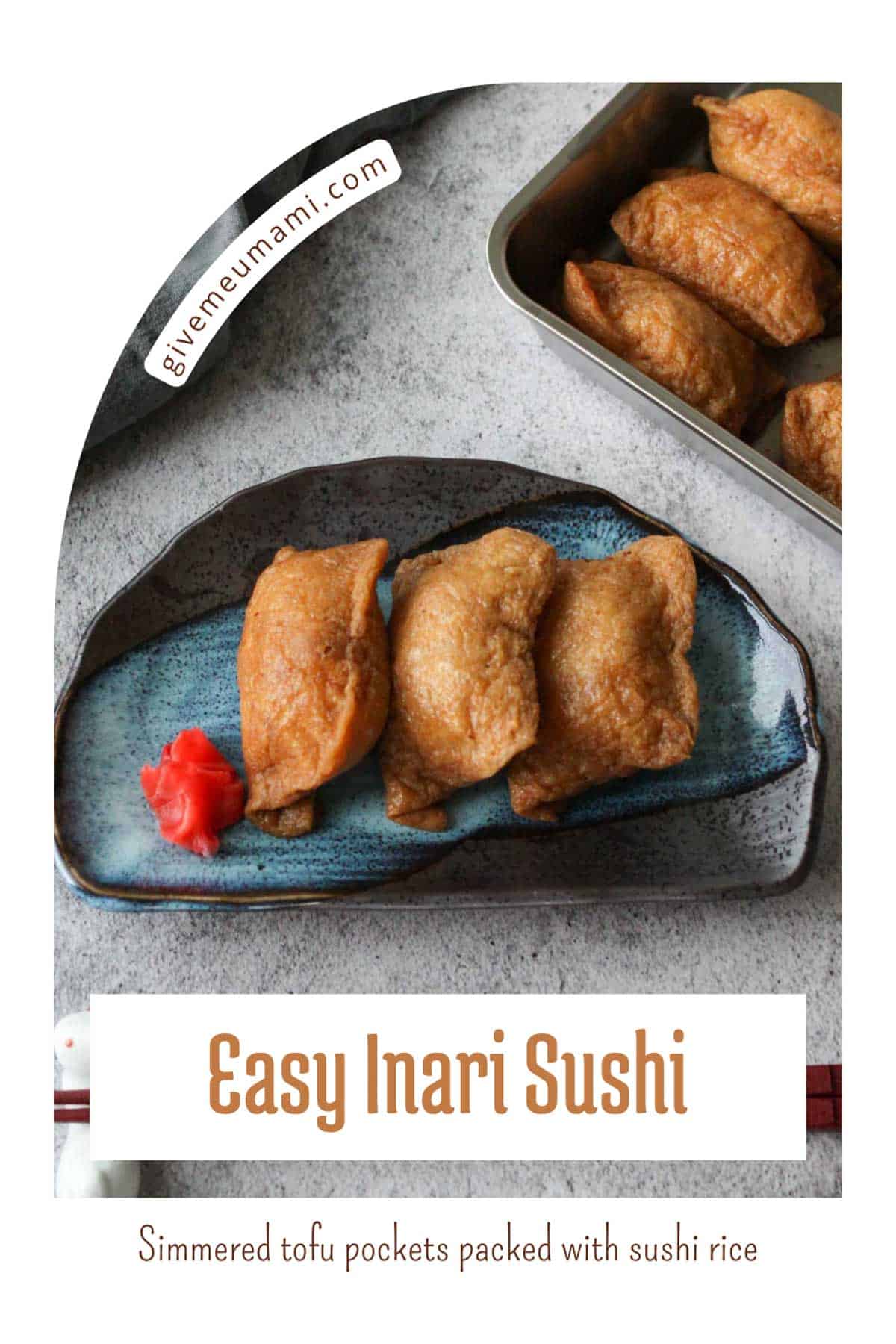




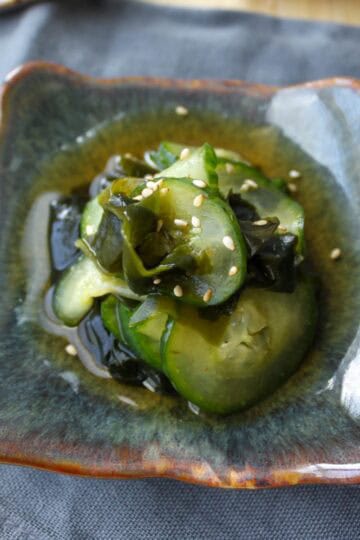
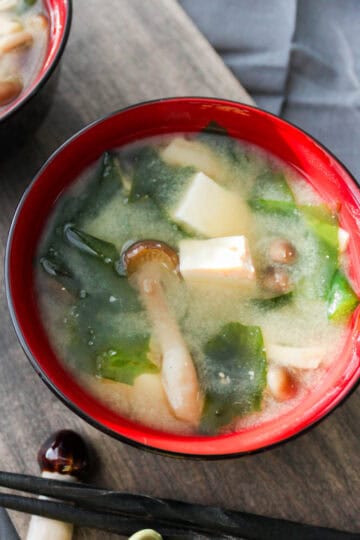
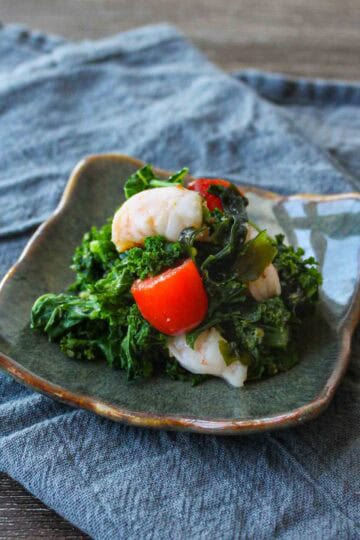
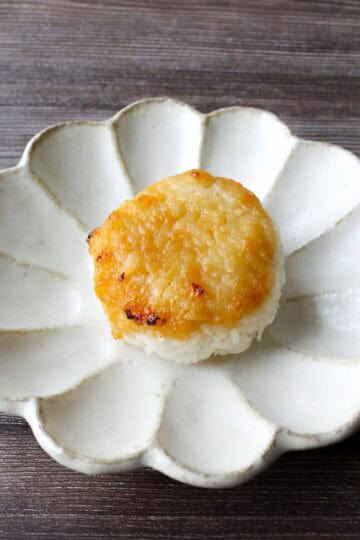
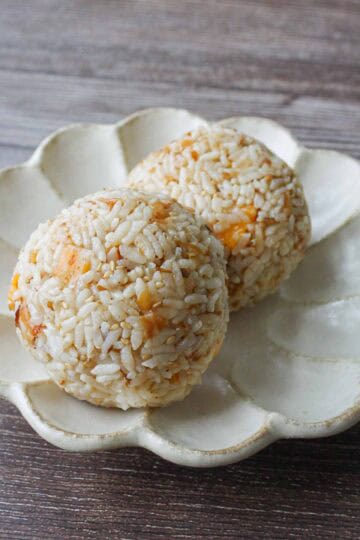

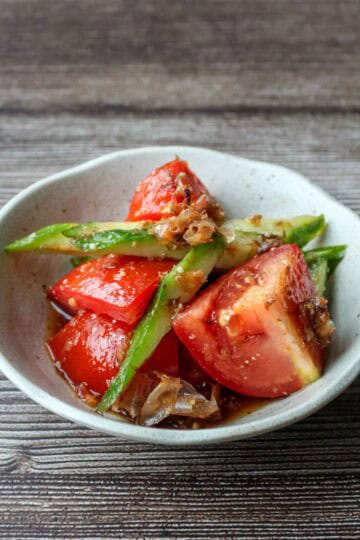



Kurumi says
Inari sushi is something my husband and I both love, but I didn’t make it often because it seemed too complicated. Turns out, if you open all the inari-age and shape the rice first, then fill them all at once, it’s way easier and less messy! Plus, the sushi rice seasoned with maple syrup has a more natural flavor than sugar, and it tastes so good! I hope you like it too 🙂 Let me know if you come up with any fun topping ideas!